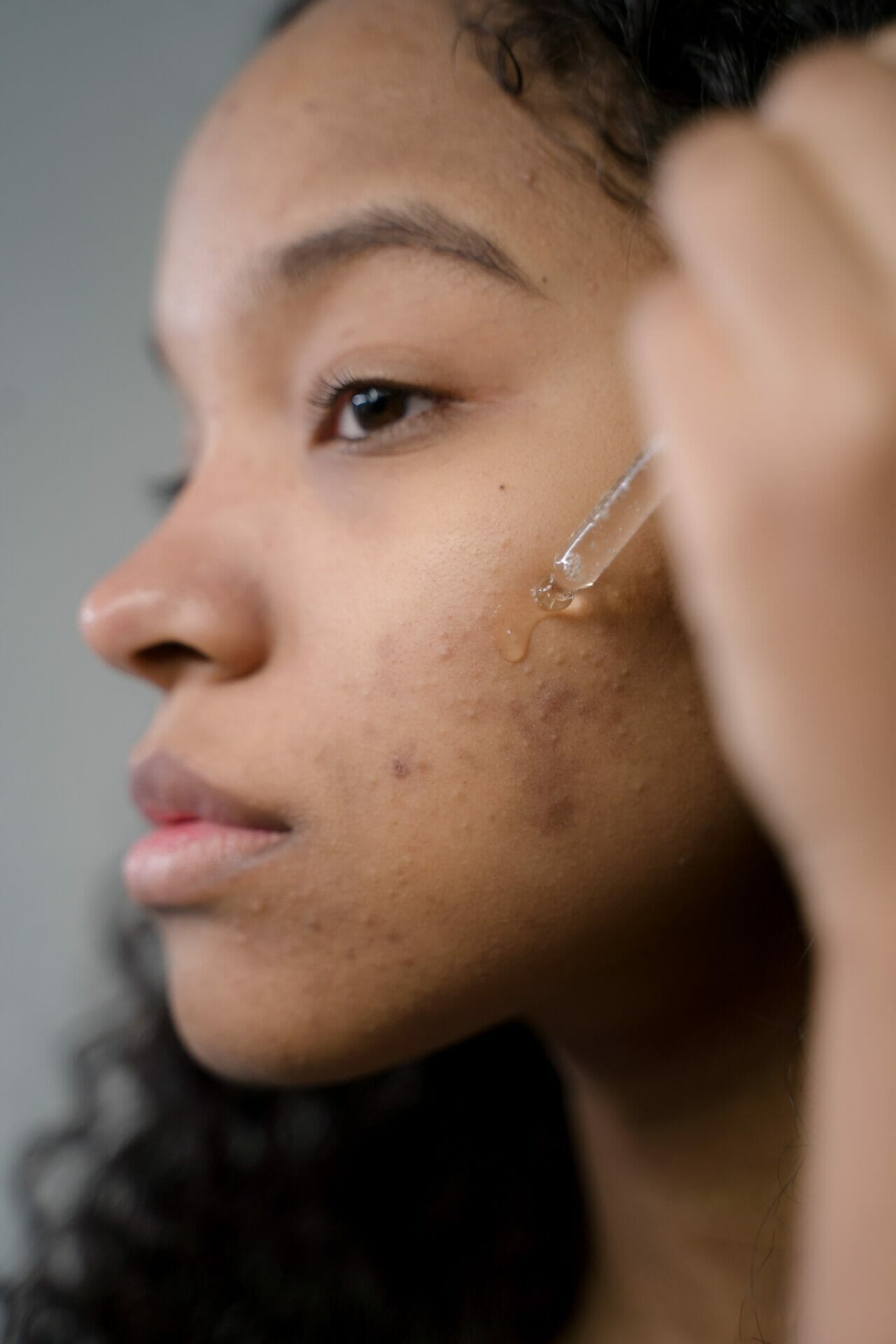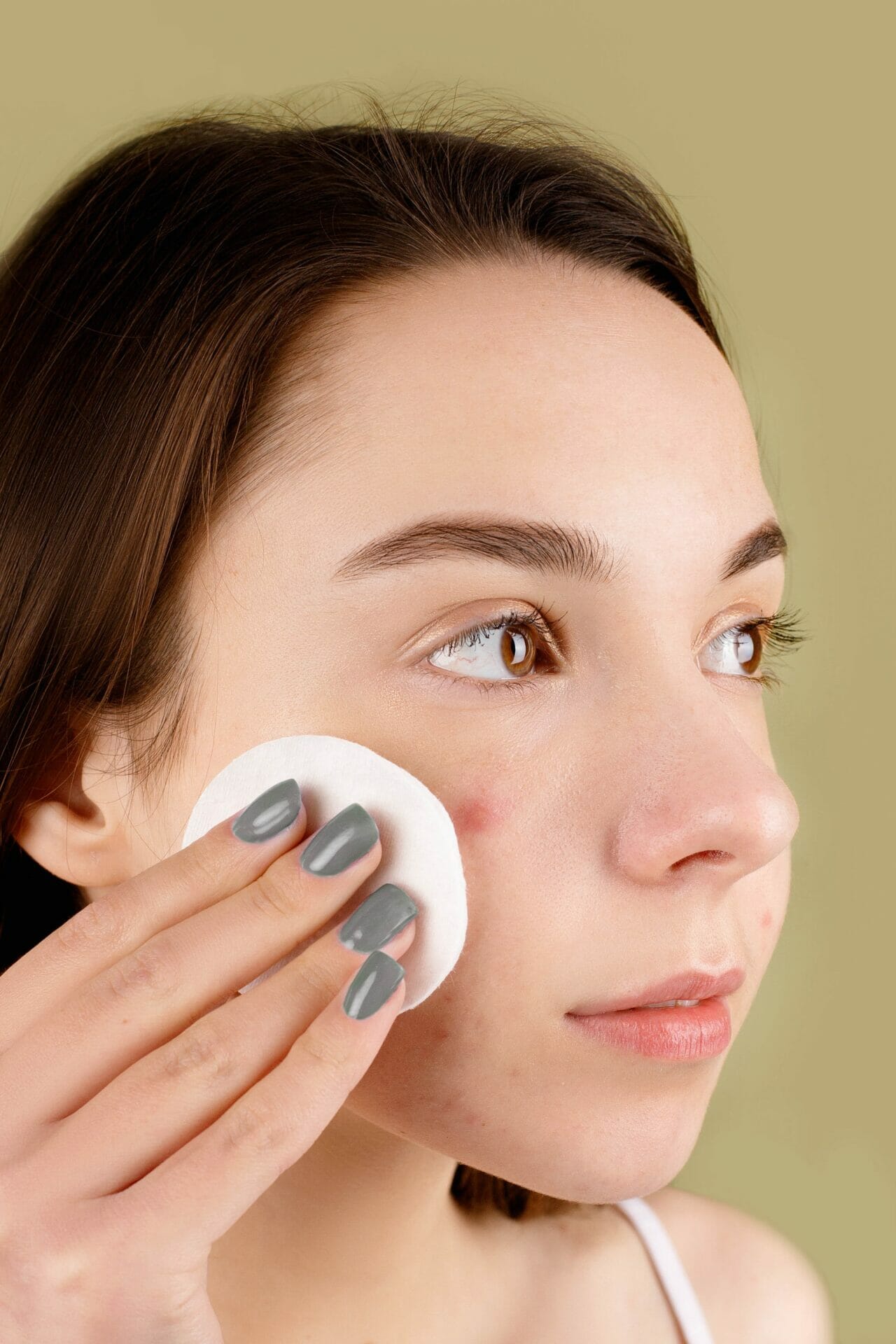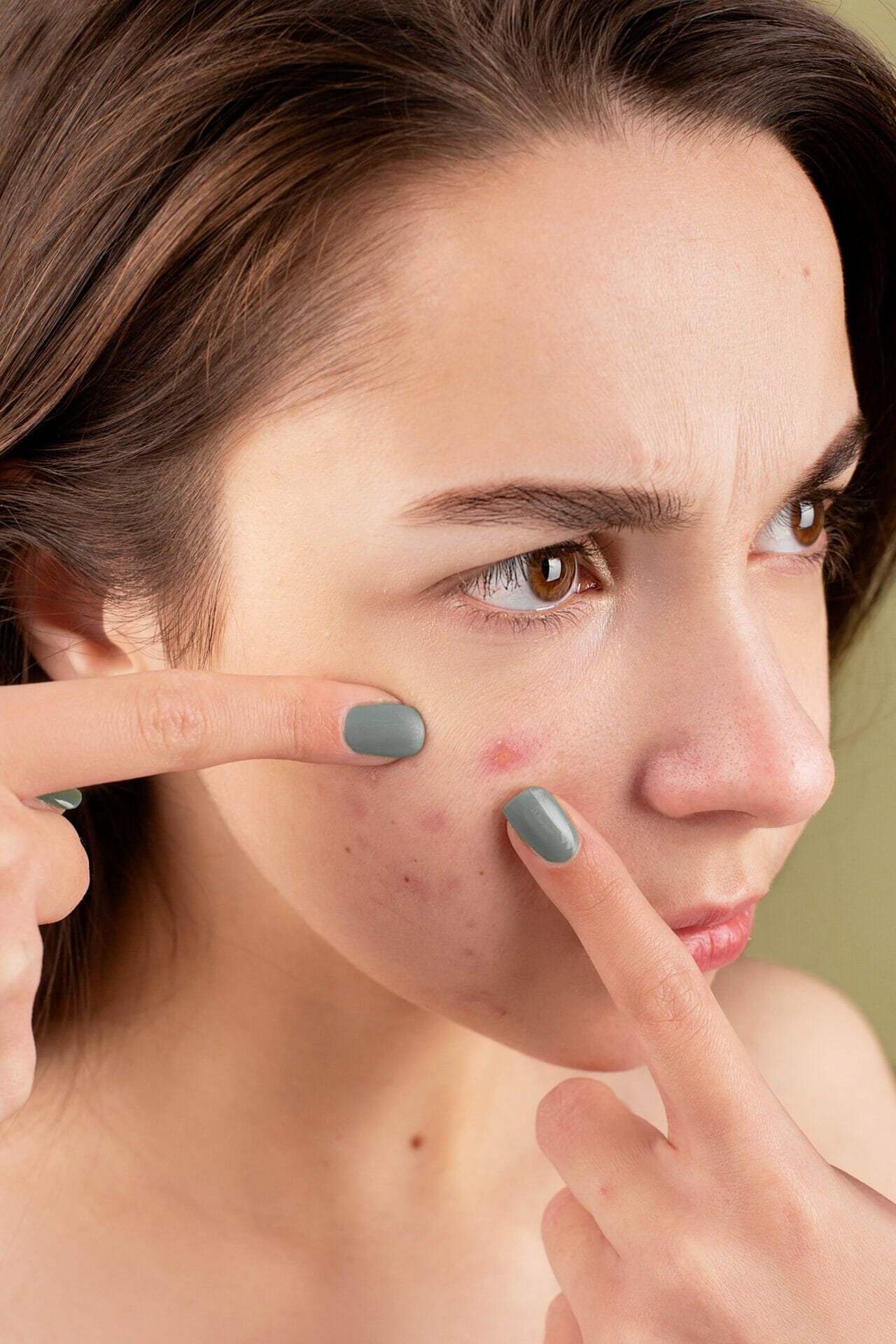Nothing is more frustrating than waking up to a breakout right before a big event or an important day. We’ve all been there, desperately searching for ways to heal it quickly. However, it’s vital to remember that the healing process requires time and proper care to prevent scarring and future breakouts. Let’s explore some effective methods to heal blemishes the right way, so they leave no trace of their existence.
Why does acne leave a scar?
Pimples can sometimes leave behind scars due to the inflammation and damage caused to the skin during the acne healing process. The scarring occurs primarily when the body’s natural healing response is disrupted—i.e. a pimple is popped—leading to abnormal collagen production and tissue repair that results in pitted or raised scarring, long-lasting redness (also known as post-inflammatory erythema or PIE), or dark spots (also known as post-inflammatory hyperpigmentation) depending on your skin tone and type.
While your first and best defense is to allow blemishes to heal naturally, we all know picking and popping happens. So let’s break down how to heal a pimple once it’s been popped to up your odds of staying scar-free.
How to Heal a Popped Pimple
Accidentally (wink wink) popping a pimple can happen to anyone, but it’s important to know the proper steps to promote healing and prevent further damage. If you’re dealing with a popped pimple, here are a few options for treating it properly:
Keep the Area Clean
Cleanse the area with a gentle cleanser twice a day to keep it free from dirt and oil. Avoid harsh scrubbing, as it can irritate the skin and prolong the healing process.
Apply a Spot Treatment
After gently cleansing the affected area, apply a spot treatment specifically designed to target blemishes. Look for ingredients like salicylic acid, benzoyl peroxide, or sulfur, which help reduce redness and inflammation.
Prevent Scarring
To prevent scarring, avoid picking or popping the pimple further. It can introduce more bacteria into the open wound, leading to infection and scarring. Additionally, picking can delay the healing process and cause the pimple to become more inflamed. Instead, make sure to keep the blemish clean and protect it with an occlusive moisturizer or hydrocolloid patch to ensure it heals without a hitch.

What Are the Best Spot Treatments for Blemishes?
There are several spot treatments available that can effectively aid in the healing process of blemishes. Here are some commonly recommended ones:
Salicylic Acid
Salicylic acid works by unclogging pores and reducing inflammation. It helps to exfoliate dead skin cells and promote the growth of new, healthy skin. But be careful—applying too much or too frequently can dry out your skin and lead to flakiness.
Benzoyl Peroxide
Benzoyl peroxide is known for its antibacterial properties and is effective in eliminating acne-causing bacteria. It also helps to reduce inflammation and dry out the blemish, so be sure to keep your skin properly hydrated to avoid flaking.
Hydrocolloid Patches
Hydrocolloid patches are thin, adhesive patches that can be applied directly on the pimple. They work by absorbing the excess fluid from the blemish, speeding up the healing process and reducing redness. Hydrocolloid patches tend to work best on pimples that have come to a head, as they draw out the pus, but using them on angry red bumps can also help protect the blemish further from bacteria and help it heal more quickly.
How to Reduce Redness and Inflammation
When dealing with a particularly inflamed blemish, there are several steps you can take to reduce redness and inflammation—and we don’t mean using concealer:
Keep the Area Clean
Maintaining cleanliness is crucial to prevent further irritation and infection. Gently cleanse the area with a mild cleanser and pat it dry with a clean towel. Applying an occlusive moisturizer or hydrocolloid over the clean blemish will ensure it stays sterile and contribute to faster healing.
Avoid Picking or Popping
We know it’s hard, but resist the urge to pick or pop the blemish, as it can worsen the redness and cause additional damage. Instead, allow it to heal as naturally as possible.
Apply a Cold Compress
Applying a cold compress, like a clean ice pack, a cold cloth wrapped in a thin towel, or even a clean frozen spoon, can help reduce redness and calm inflammation. Remember to never apply ice directly to the skin to avoid potential burns.

How to Keep Your Skin Healthy and Prevent Breakouts
Prevention is key when it comes to maintaining healthy, blemish-free skin. Here are some essential tips:
Use a Gentle Cleanser
Choose a cleanser specifically formulated for your skin type. Avoid harsh ingredients that can strip the skin of its natural oils, leading to dryness and potential breakouts.
Know Your Skin Type
Understanding your skin type is crucial in selecting the right skincare products. Whether you have oily, dry, combination, or sensitive skin, tailor your routine to meet your skin’s unique needs and keep it calm and balanced.
Hydrate and Moisturize
Keeping your skin hydrated is crucial to maintaining its natural moisture barrier. Drink plenty of water each day and apply a non-comedogenic (non-pore-clogging) moisturizer in the morning and in the evening after cleansing to prevent dryness and flakiness.
When to Seek Help from a Skin Professional
In some cases, consulting an esthetician or dermatologist may be necessary to properly treat stubborn blemishes. Here are a few signs that indicate it’s time to seek professional help:
Severe Acne Breakouts
If you’re experiencing persistent and severe acne breakouts that don’t respond to over-the-counter treatments, a professional can recommend other treatment options that may be able to help.
Unresponsive Blemishes
If you’ve tried various treatments, but the blemishes remain stubborn and don’t show signs of improvement, it’s best to consult with a skin professional for a personalized treatment plan.
Open Wounds or Infection
If the blemish becomes an open wound or shows signs of infection such as increased redness, swelling, or pain, it’s important to seek immediate medical attention to prevent complications.
Sick of Stubborn Blemishes?
If you’ve tried these tips and still struggle with regular breakouts, or if years of picking or popping pimples have led to permanent scarring, it may be time to call in the experts. Schedule a free consultation with the team at Center Medspa to discover the treatments, products, and routines that could change the game for your skin and leave you clear, confident, and glowing.


